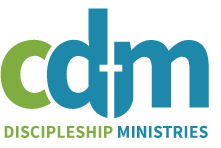Over the years I have gone to MANY teacher training workshops. What I found interesting is that most of them simply focused on expanding a teacher’s arsenal of methods. After many years of studying the subject of how we learn and process new information, I have discovered that when you lay out all these teaching methods, people will pick those that best fit with their own learning style. This means that we will pick those methods we are comfortable using, but these will not reach as many as three-fourths of our students whose learning style is different from ours.
Learning styles is not a new subject, nor is it a fad. It was first defined in the 1950s. Christians were introduced to it in the early ’70s when Larry Richards taught us to develop our lessons using “Hook, Book, Look, Took.” I’m not sure how much Larry understood the science of learning styles at that time, but he got it just right.
Today it is recognized that the old “IQ” test is grossly inadequate for measuring intelligence. It is accepted that there are at least nine different intelligences that need to be measured.
How we process new information can be comfortably broken down into four categories. Cynthia Tobias calls them by more technical terms: concrete sequential, abstract sequential, abstract random, and concrete random. These can also be called concrete experience, abstract conceptualization, active experimentation, and reflective observation. Marleen LaFever and Bernice McCarthy refer to them more creatively as imaginative, analytic, common sense, and dynamic. Each describes a different way that learners take in new information and decide what to do with it.
If you have more than one child, you know how different they are. One might prefer to do homework while sitting on the floor with the radio blaring, while the other has to sit at a well lit table in complete silence. If you have more than two children there is a good chance that you are already aware of several different learning styles. For example, if you have a child or student who is very imaginative, he or she might like to talk in generalities rather than specifics and prefer to learn while talking. These children are empathetic, and might go so far as to let their grades drop so they can be part of a group. They work best in a noisy setting, and they don’t like to work alone. They also do not like lectures, which is true of three out of the four styles. Even the color scheme of the room can make a difference for them. While each of the learning styles has a list of characteristics, it must be clearly understood that almost no one fits tightly into any one category. Most of us will overlap into at least one other category.
A question I am often asked is: can our learning style change? The answer is no. We learn to adapt ourselves to the learning situation we are in if we want to survive or fit in.
One last point. Learning styles are often confused with modalities. There are three modalities: hearing, seeing, and motion. Each learning style will have those learners who are strong auditory learners, visual, and/or tactile/kinesthetic. These are subcategories of learning styles.
